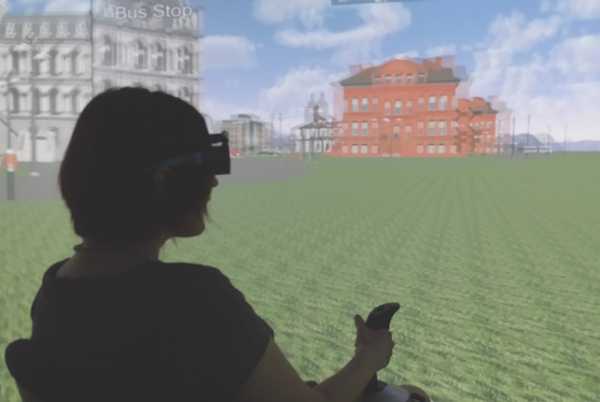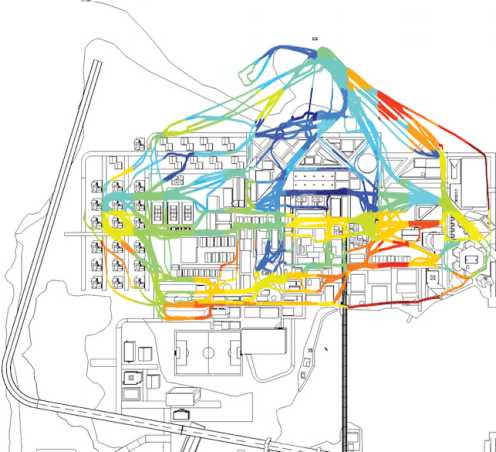Cognition, Perception and Behaviour in Urban Environments
Understanding and modelling wayfinding behaviour in complex, multi-level environments using a combination of real-world observations and virtual reality experiments
Urbanisation in Singapore has led to a variety of transport engineering challenges that need to be considered in the design and retrofit of public spaces for the accommodation of higher population densities. The optimisation of crowd movement is key to the success of these environments as financial and recreational centres. Indeed, this success is ultimately connected to patrons’ well-being and appraisal. Our approach complements big data-driven and simulation-based approaches by providing an in-depth analysis of individuals’ wayfinding decisions in large, dense crowds and the impact of the built environment on these decisions.
Our methodological toolkit includes both physiological and behavioural techniques. Eye tracking will provide precise data regarding the direction of the observer’s gaze, which can indicate his intentions and choices. Simultaneously, physiological measures, such as skin conductance and heart rate, link the observers’ emotional states to the perceived environment. Spatial analysis methods (for example, space syntax) will be used to quantify network properties that can influence spatial decision-making.
This project will use such measures to predict wayfinding performance in the context of preoccupancy evaluation for real-world scenarios. Here, virtual reality will serve as a platform for the generation and assessment of different design options. Using this evidence-based approach, the project will produce scientifically grounded guidelines for the design of public spaces that are more responsive to the needs of both stakeholders and patrons.
At the local level, such spaces should lead to better traffic flow and well-being. At the global level, these spaces can integrate with adjoining neighbourhoods and alleviate congestion elsewhere in the city. Cognitive Singapore emphasises the communication between cognitive scientists and architects and designers with the primary aim of achieving responsive environments.
Cognition, Perception, and Behaviour in Urban Environments
 Electrodermal data collected while participants navigated through a virtual city. This figure illustrates areas of high (red) and low (blue) arousal.
Image: Tyler Thrash, Victor Schinazi, Beatrix Emo, Christoph Hölscher
Electrodermal data collected while participants navigated through a virtual city. This figure illustrates areas of high (red) and low (blue) arousal.
Image: Tyler Thrash, Victor Schinazi, Beatrix Emo, Christoph Hölscher
